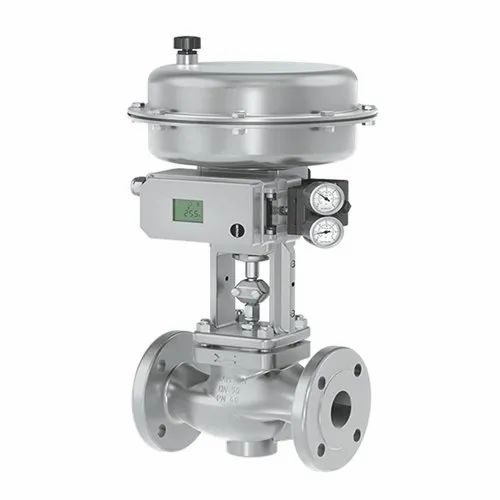
A pressure control valve is essential to any pneumatic system, but why? In this blog post, we’ll explore the importance of a pressure control valve in a pneumatic system and how it helps ensure that it operates as effectively and efficiently as possible.
The pressure control valve (also known as a relief valve) is an essential component of a pneumatic system, used to prevent the system from overpressurizing and ensuring the safety of its components. By restricting the pressure downstream of a unit, the control valve helps maintain optimal system performance and reliability. Additionally, it can regulate pressure levels and reduce system noise.
Overpressure can happen if the flow of water or air is not regulated correctly, leading to an accumulation of energy or fluid in certain parts of the system. This can lead to a dangerous release of energy or fluid if the system fails, leading to potential damage and destruction. To prevent this from happening, it is vital to be aware of the weakest points in a pneumatic system and to take action to ensure these parts are properly maintained. Taking the necessary precautions to regulate the flow of water and air helps avoid the risk of overpressure and keeps your system in optimal working condition.
How to Identify If a Component Is At Risk of Overpressure
Check for Any Pipe Leakage
Piping is essential for a properly functioning air system, but it can also be a potential source of overpressure if it fails to contain the pressure it is designed for. To ensure your system is functioning at peak efficiency, it is essential to check regularly for any signs of pipe leakage. Corrosion can cause the relief valve to malfunction, leading to dangerous overpressure and potential damage to your system. Take your time – inspect your piping regularly to catch any signs of a leak before it becomes a bigger problem.
Identifying Pressure Ratings on the Main Regulator
Identifying the pressure rating of a pressure-reducing regulator is essential for ensuring that the device can safely and accurately reduce pressure levels. When selecting the appropriate pressure-reducing regulator, the lowest pressure point of the device should be the primary factor for determining the allowable flow. Primary regulators typically feature a range of pressure ratings, which refer to the internal, inlet, and outlet components. To ensure that the device is appropriately matched for the application, it is necessary to determine the pressure ratings for each element. This will ensure that the regulator can safely and effectively reduce the pressure levels in the system.
Examine the Downstream Equipment Pressure Ratings
Sift through your downstream equipment pressure ratings to ensure they do not exceed the maximum pressure rating of the downstream components, such as boilers, burners, and appliances. Doing so can help you avoid potentially costly problems that may arise from exceeding the maximum pressure rating. Additionally, regularly check and maintain the equipment to ensure proper pressure ratings are maintained.
Why Pressure Control Valves are Popular?
Pressure control valves are popular because they provide a basic level of protection for air compressors and other systems. They are designed to limit the pressure of the incoming air, which prevents malfunctions, increases efficiency, and helps keep the system running smoothly. Relief valves also act as alarms if the system operates abnormally, helping to avoid major malfunctions. Finally, these valves do not reduce the regulator capacities they protect, making them an ideal choice for reliable and efficient pressure control.
Types of Relief Valves
There are four general pressure control valves: pop type, internal relief valves, direct-operated, and pilot-operated valves.
Pop Type pressure control valves
Pop-type relief valves are the most economical and reliable choice for applications where cost-efficiency is paramount and some setpoint drift is acceptable. They are designed to provide reliable, cost-effective protection for various applications, making them an ideal choice for any situation.
Internal type pressure control valves
Internal relief valves provide vital system protection from overpressure, ensuring that pumps are not blocked and avoiding the need for external overpressure protection. In addition, these valves can maintain a steady pressure within the system, preventing damage from pressure levels exceeding the recommended limits. Using an internal relief valve ensures that your system is appropriately protected from overpressure and that your pump functions safely.
Direct-Operated type pressure control valves
Direct-operated relief valves offer the unique ability to allow for throttling action and may require less pressure accumulation to open the valve. This makes them an ideal choice for various applications requiring precise pressure control. In addition, with their efficient and reliable operation, direct-operated relief valves make optimal pressure regulation possible.
Pilot-Operated type pressure control valves
Pilot-operated relief valves are designed to open and discharge pressure from their dome when the setpoint is reached. As soon as the piston opens, the system fluid is immediately exhausted. Next, the control pilot opens to the atmosphere or the primary valve exhaust, allowing the system pressure to be released and the valve to close. This ensures that pressure is maintained and regulated according to the setpoint, providing effective relief and safety.
Conclusion
A pressure control valve is an essential component of a pneumatic system. It prevents the system from over-pressurizing and ensures the safety of its components by restricting the pressure downstream of a unit. Without the pressure control valve, the system can suffer from overpressure, leading to a dangerous release of energy or fluid if the system fails and cause potential damage and
destruction. Therefore, it is crucial to have a pressure control valve installed in a pneumatic system to ensure its safety and optimal performance.






